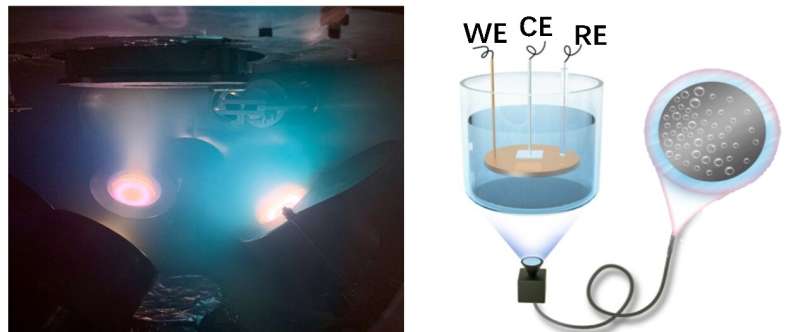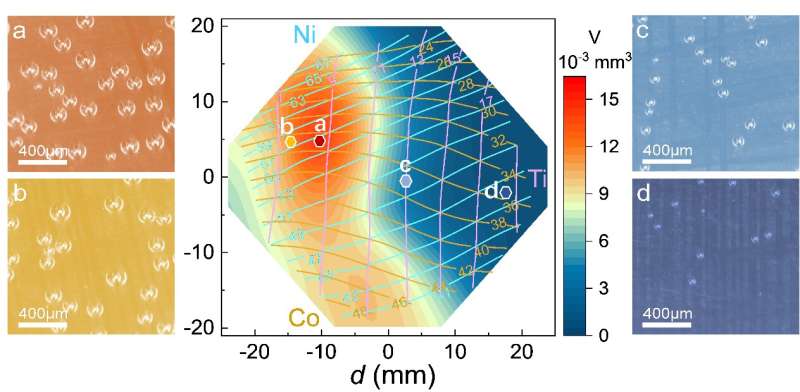Combinatorial high-throughput strategy proposed to screen hydrogen evolution reaction catalysts

A research group led by Prof. Wang Junqiang at the Ningbo Institute of Materials Technology and Engineering (NIMTE) of the Chinese Academy of Sciences (CAS) has developed a combinatorial high-throughput strategy to screen superior catalysts for hydrogen evolution reaction (HER). The research work has been published in ACS Catalysis.
Thanks to the excellent features of low cost, high catalytic activity and good durability, catalysts based on multiple non-noble metals, such as nickel (Ni) and cobalt (Co) alloys, have attracted increasing attention worldwide in the research realm of HER or oxygen evolution reaction (OER). However, due to the vast compositional space of multicomponent alloys which requires considerable work on catalyst fabrication and performance test, it remains challenging to identify the optimal catalyst for HER both computationally and experimentally.
Based on previous studies, researchers at NIMTE selected the non-noble elements Ni and Co as the dominant alloy components with titanium (Ti) as the additional alloy element, thus tailoring the hydrogen evolution. Through magnetron co-sputtering deposition, researchers synthesized the ternary Ni-Co-Ti film library.
The researchers proposed the high-throughput bubble screening method to identify the superior multicomponent alloys employed as the high-performance HER catalysts. The overall screening efficiency has been improved by more than 10,000 times as compared with the traditional time-consuming and labor-intensive trial-and-error methods.

In addition, the parallel electrochemical analysis was conducted, indicating that among the broad-phase diagram with 39% < Ni < 69%, 22% < Co <50%, and 5.5% < Ti < 20%, the Ni56.5Co35Ti8.5 alloy possesses the optimal catalytic performance.
Moreover, they investigated the underlying mechanism and found that the low atomic packing density and low electron binding energy contribute to the high catalytic activity in HER.
The combinatorial high-throughput strategy proposed in this study showed great potential to be extended to the catalyst exploration in higher composition alloy systems and even for OERs.
More information: Xuanzhi Liu et al, Combinatorial High-Throughput Methods for Designing Hydrogen Evolution Reaction Catalysts, ACS Catalysis (2022). DOI: 10.1021/acscatal.2c00869
Journal information: ACS Catalysis
Provided by Chinese Academy of Sciences





















